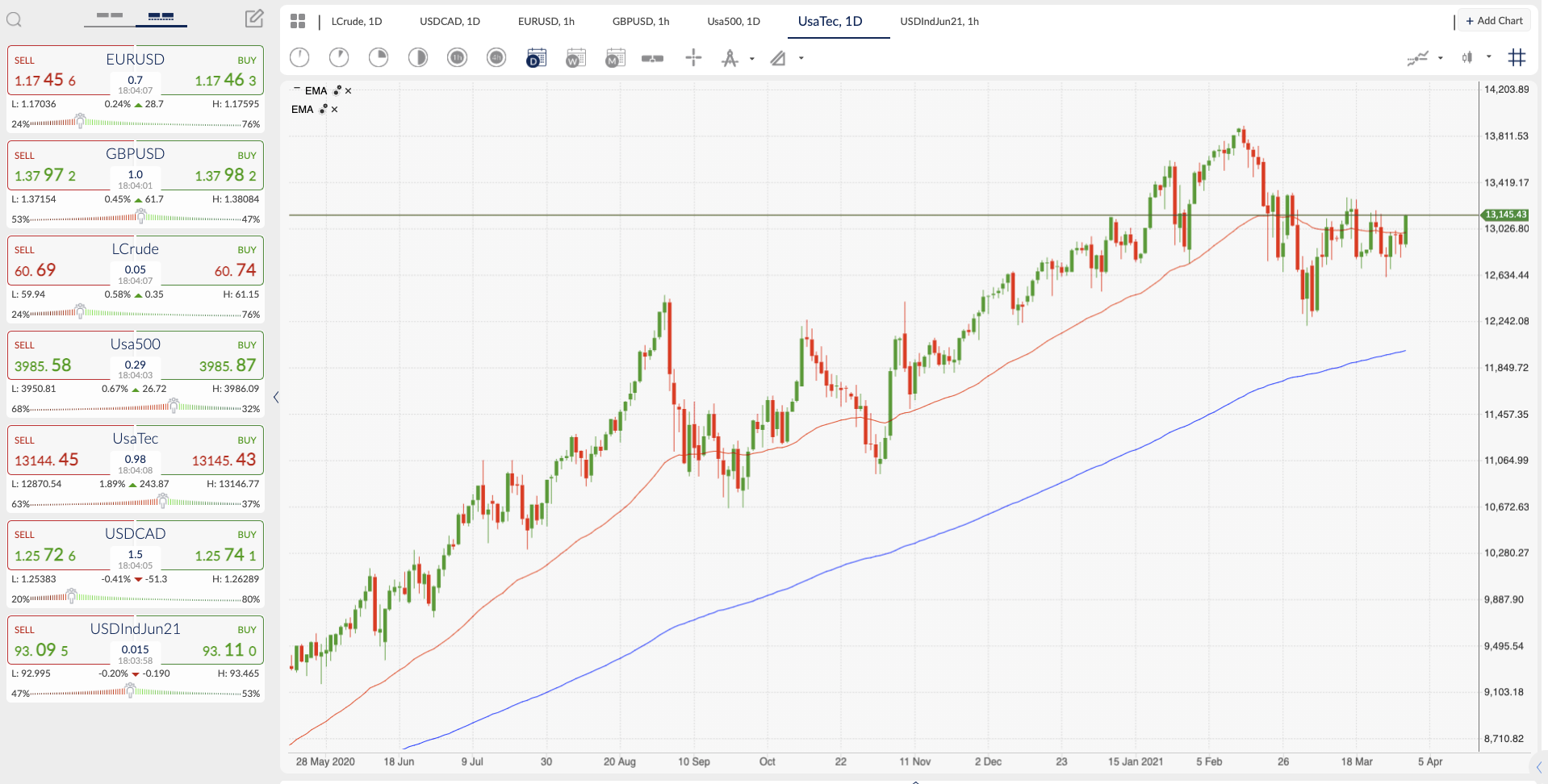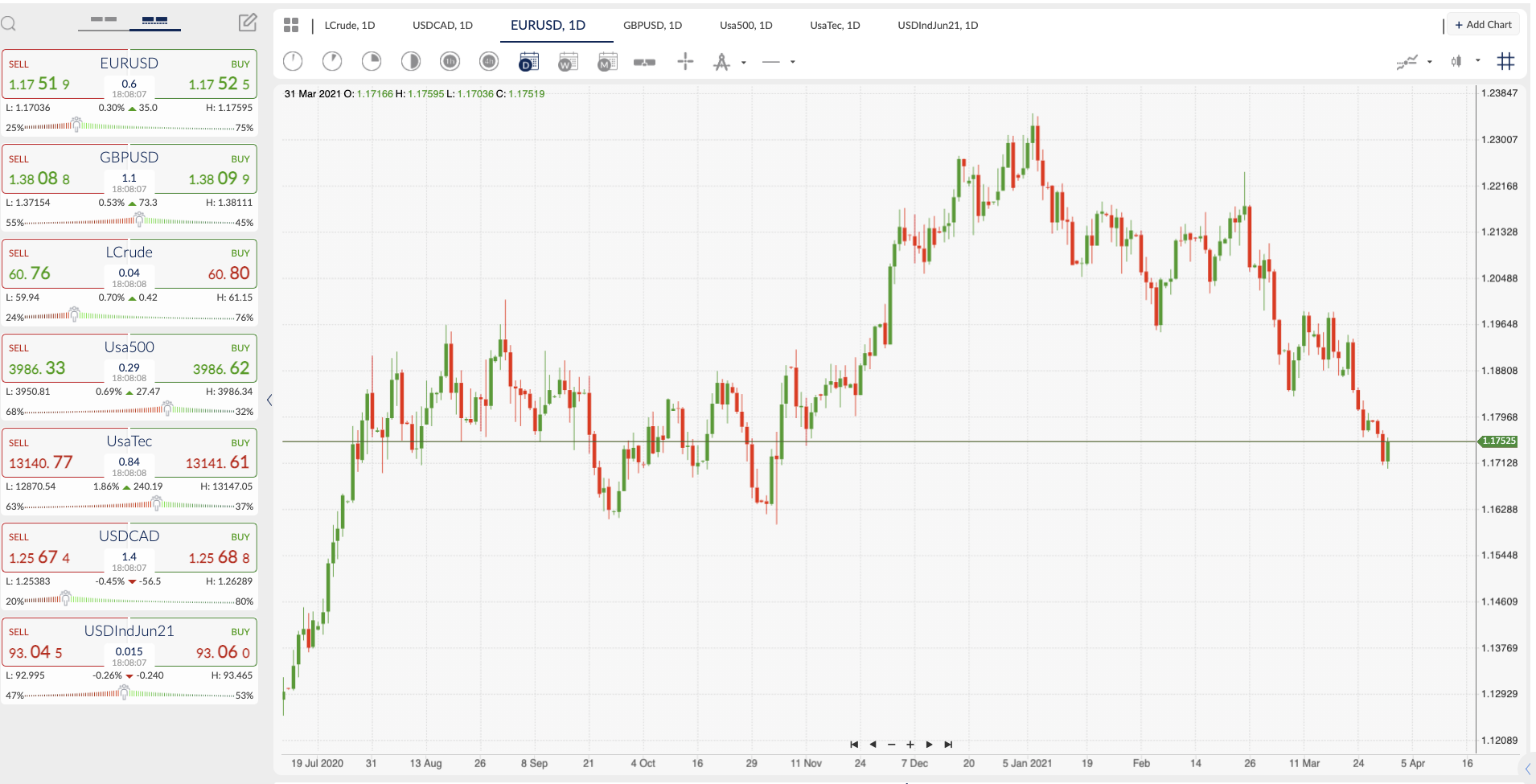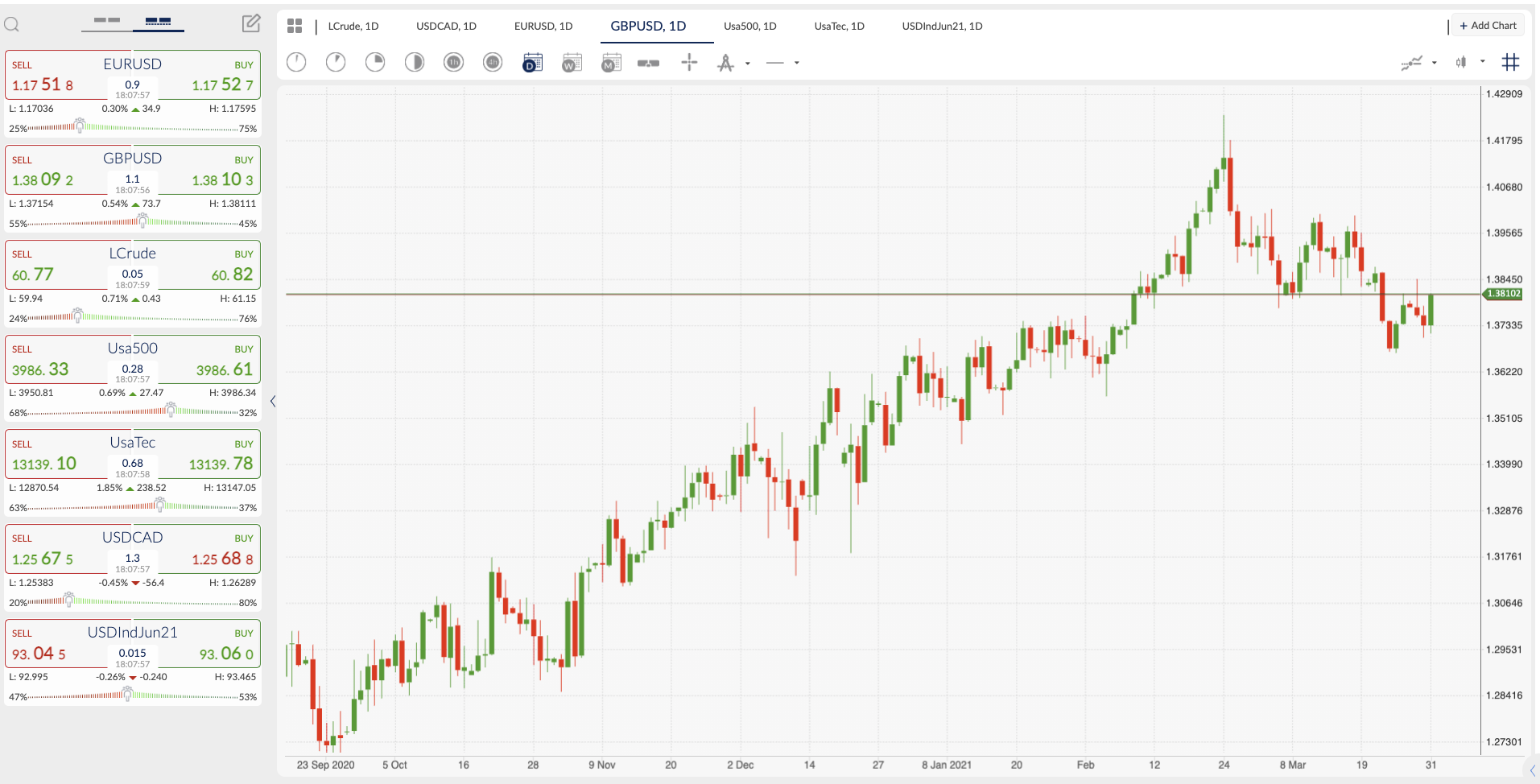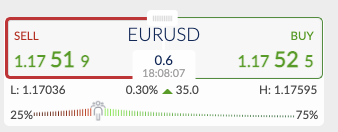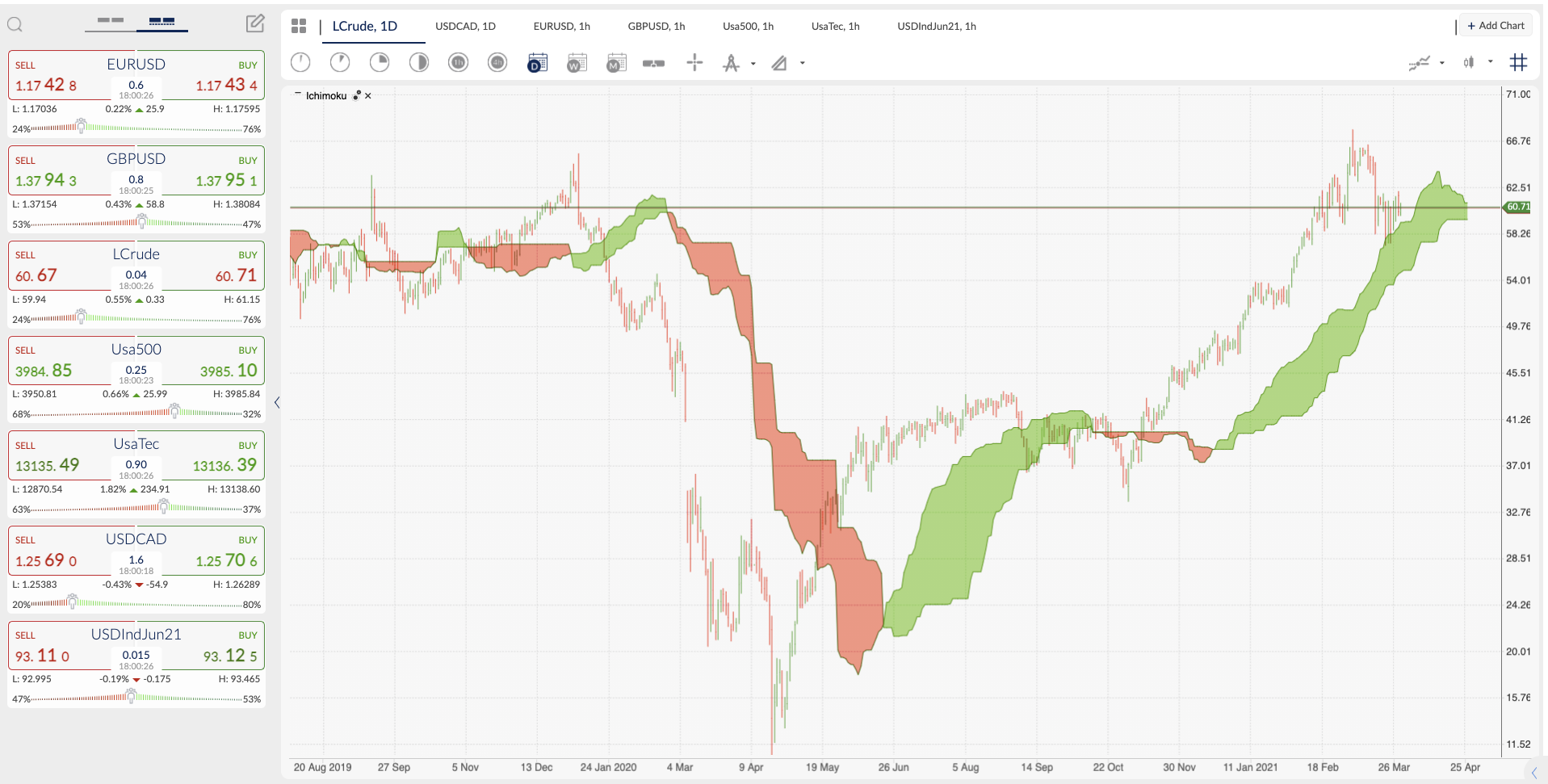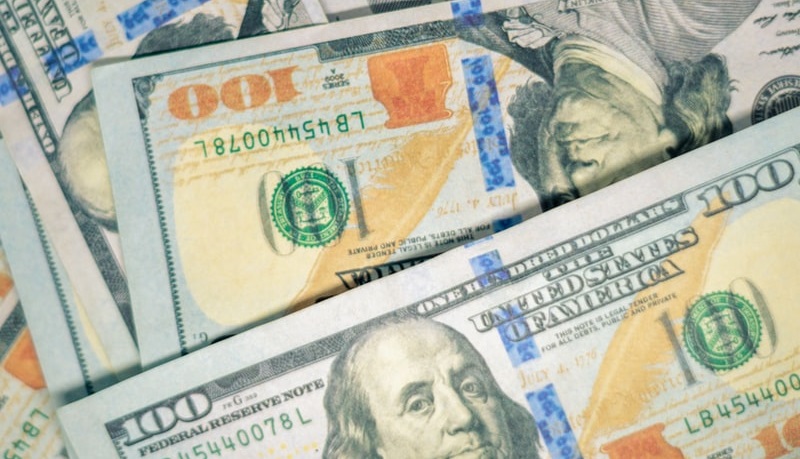Today it may be a case of buy the rumour sell the news as most of the focus is on the details of President Joe Biden’s $2.25 trillion infrastructure package. Plus, we have the usual end-of-month/fiscal quarter rebalancing that happens.
S&P500 and Nasdaq are trading higher from the US session open following the release of the ADP’s employment report for March. The S&P500 is trading very close to all-time highs again having found support from the 50-day exponential moving average on the 25th of March.
SME businesses added a cumulative 362.0K jobs with mid-size businesses hiring more than the larger corps. This is a great sign of economic activity as the SME’s are the growth drivers. The data pointed to the strongest jobs growth since September 2020, as US ADP National Employment rose to 517k beating the previously revised February 176K data print but missing expectations of 550.0K. The discrepancy in the expectations miss was not enough to subdue the markets, and we have seen a gain of 150 points on the Nasdaq alone. The Nasdaq looks likely to close above the daily 50 ema and from there could continue higher having been a sideways consolidation for a few weeks now.
See real-time quotes provided by our partner.
The US Chicago PMI data was also strong for March coming in above expectations at 66.3, while pending home sales in the United States were down 10.6% more than 4 times as much as expected, cracking eight consecutive months of year-over-year gains. Record-low inventory is the reason put forward for the reduction in home sales, not a decrease in demand.
Tonight, President Joe Biden will aim to push the USA in a new direction with a $2 trillion package to invest $621 billion in roads and bridges whilst also tackling climate change with $174 billion spent on a 2030 target of a nationwide charging network for the electric vehicle market. To get this bill through, American corporations are likely to have to foot a substantial portion of the costs. The plan comes is likely to come in 2 stages and build up to a $4 trillion package when we learn the full extent of his ideas in April.
Adding the $1.9 trillion coronavirus relief package to Biden’s infrastructure initiative would give the federal government a larger stake in the U.S. economy than it has had in generations. The fundamental change in the Government also backing loans made by commercial banks is something that has not been done since world war 2 and is a road to inflation where the Central Banks fell short. The US dollar index shows that $93 is maybe the top for now as of today’s price action beyond the 50% retracement of yesterday’s bullish move.
See real-time quotes provided by our partner.
See real-time quotes provided by our partner.
Corporates tax rates up to 28% from 21% and change the tax code to close loopholes that allow companies to move profits overseas will be one potential market-moving initiative but unfortunately not to the upside. The greater fiscal flows are good for the markets but anything that hits corporate profits will undo a lot of that bullishness.
Congress will also be asked to put $400 billion toward expanding access to affordable home or community-based care for aging Americans and people with disabilities.
U.S. Treasury Secretary Janet Yellen is facing pressure from Democrats to unwind the relaxing of fund oversight from the Trump administration and to reinstall tougher scrutiny of hedge funds following the Archegos Capital Management failure. Shares in commercial banks Nomura and Credit Suisse continued to fall, with a collective $9 billion wiped off their market value so far this week as the banks braced for big losses. Global lenders that acted as brokers for Archegos may have to write down more than $6 billion after the fund defaulted on payments, Reuters has reported.
The US Energy Information Administration (EIA) crude oil inventories have reduced by 0.876 million coming in at 501.8 million barrels in the week ending March 26. Oil prices continue to around $61.0 per barrel on Wednesday, ahead of an OPEC+ meeting where major producers are likely to extend the current production cut into May. Covid-19, European lockdowns, general lack of demand for oil does not warrant the oil cartel pushing production higher. Looking at the D1 chart for oil, the price action on the edge of the Ichimoku cloud is signalling some support here and although I would not want to short into market structure, I would have to see a real bullish signal before taking a long currently. If USDCAD could find resistance at the Ichimoku cloud indicator that could be one reason closer for going long oil. A break of today’s low could then see the Loonie testing the march swing lows and the start of a wider US dollar sell-off. 80% of retail traders think the USDCAD should be trading higher, so if this was to turn bearish that would be a good signal that Oil could be about to correct lower.
See real-time quotes provided by our partner.

